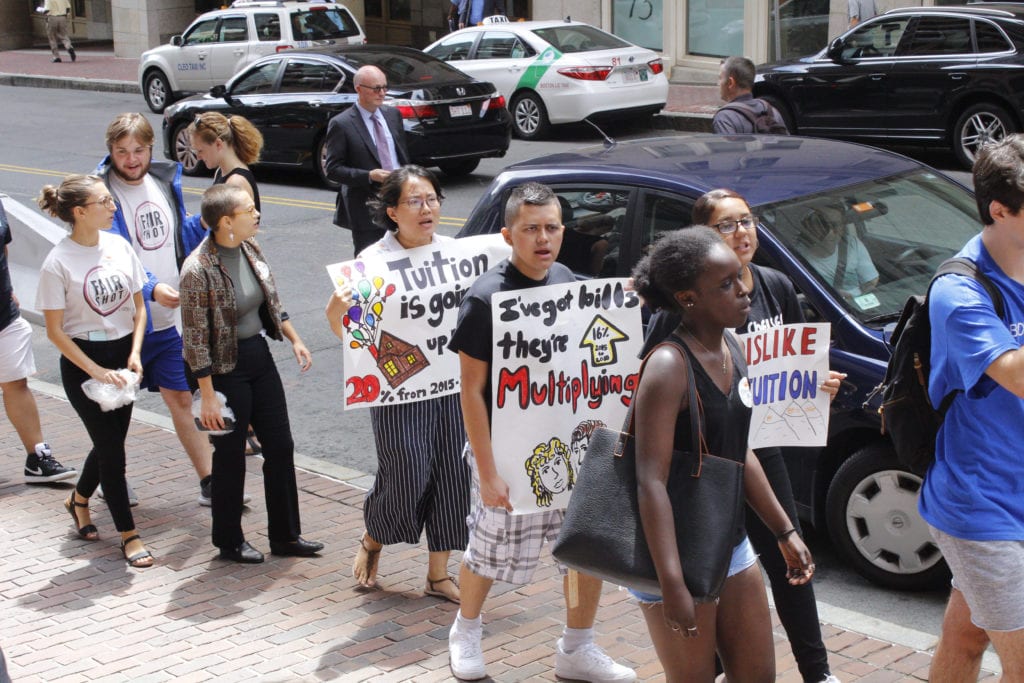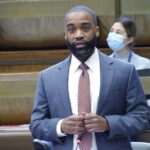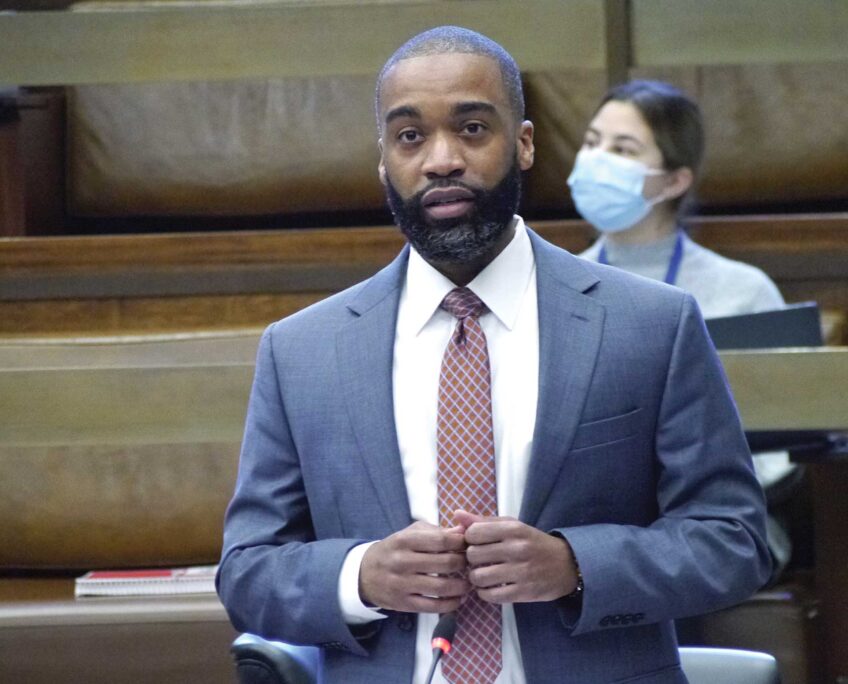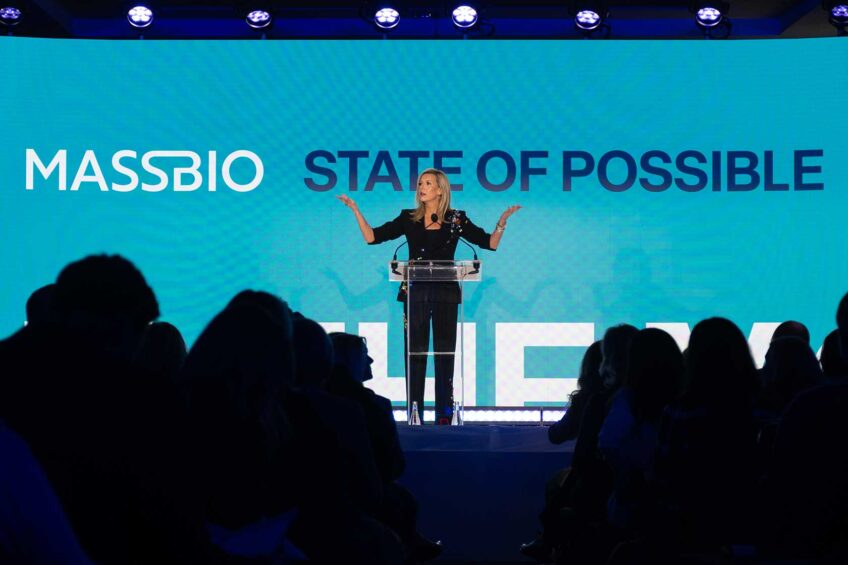
Students and higher education activists picketed the University of Massachusetts downtown office at One Beacon Street Wednesday, to protest a 2.5 percent increase in tuition across all UMass schools.
Wrestling their placards against buffeting winds, almost 50 protestors circled outside the building for an hour at midday, ensuring that university administrators inside could hear their demands for no further raises in tuition and greater state financial aid.
“I’m here today to give a voice to students who feel like they can’t do anything about their financial situation,” said Jordan Leedberg, a junior majoring in biology at UMass Lowell.
Organized by the Hildreth Institute, with help from other higher education advocacy groups including La Vida Scholars and the Chelsea Collaborative, protestors braved thunderstorms to raise awareness of the alarming growth of student debt.
The latest hike in tuition fees, announced by UMass earlier this month, would raise the average cost of education at the public school to more than $14,700 for the 2018-2019 academic year. Freshmen who attended UMass in 2015 have witnessed a 17 percent increase in fees since their matriculation, adding $4,500 to their total bill.
Like many students, Leedberg did her research before applying to college and, as a Tewksbury resident, said she chose UMass because it seemed more affordable than other schools in the state.
What she failed to realize was the full extent to which her education would place a financial burden on her and her family.
“It’s the interest that ends up being the killer,” she said, while also noting she is grateful to her parents for partially footing the bill.
Working two jobs, one as a medical scribe at Lowell General Hospital and another as a manager of a cupcake store, Leedberg hopes to limit the amount of debt she will graduate with, which for Massachusetts public school graduates averages more than $30,000.
Besides higher tuition, students are faced with reduced amounts of state funding for higher education, which, since 2001, has fallen by 32 percent. During that period, state scholarship funding decreased by the same amount.
“Student debt is a social equity issue,” said Bob Hildreth, founder of the Hildreth Institute and former debt crisis advisor to the International Monetary Fund. Loans place some students at an economic disadvantage to their peers, one that is difficult to overcome with mounting debt, he said.
Massachusetts has one of the highest college attendance and graduation rates in the country, but “the other half of the population is suffering,” Hildreth told the Banner. Aside from spending more money on higher education, he believes funds must be prioritized so that the poorest residents in the state are helped first.
One solution Hildreth offered would be to stop colleges imposing loans on students who receive Federal Pell Grants, a means-tested sum, usually awarded to low-income undergraduates and do not have to be repaid.
“If I was in high school now, [student debt] would be a real deterrent,” said Gabe Adams-Keane, an Arlington resident and senior studying political science at UMass Amherst. He receives federal loans but subsidizes college expenses by campaigning for candidates and scooping ice-cream at Toscanini’s in Cambridge.
“Today is about sparking a conversation,” said Ignacio Fletcher, a third year student of political science at Boston College. Although not attending a public school, Fletcher said it was important for him to protest because all students should talk more openly about debt, conversations that, in his experience, do not happen often enough.
Originally from Puerto Rico, Fletcher said many of his friends wanted to study in the U.S. but were put off by having to take loans. In Puerto Rico, average undergraduate tuition, across both private and public schools, totals little more than $2,000.
Not only is the system not working for students, but universities are “scaring students off,” by increasing tuition, said Hildreth. He pointed to the closure of Mount Ida College in Newton, in May of this year, as an example of the effect of raising fees beyond student means.
However, in a recent interview with the Boston Globe, former president of Mount Ida, Barry Brown, blamed the school’s closure on unexpected changes Lasell College made to terms of the merger between the two schools, a deal that had been planned for more than a year.
As storms threatened to end the protest early, and building management patrolled the perimeters to keep activists off private property, Fletcher, fellow students and alumni continued to hold their banners high for Downtown’s lunch time office workers and duck tour riders to photograph.
“Education is a right,” said Fletcher. “And [it’s] one no student should have to fight loans for.”






